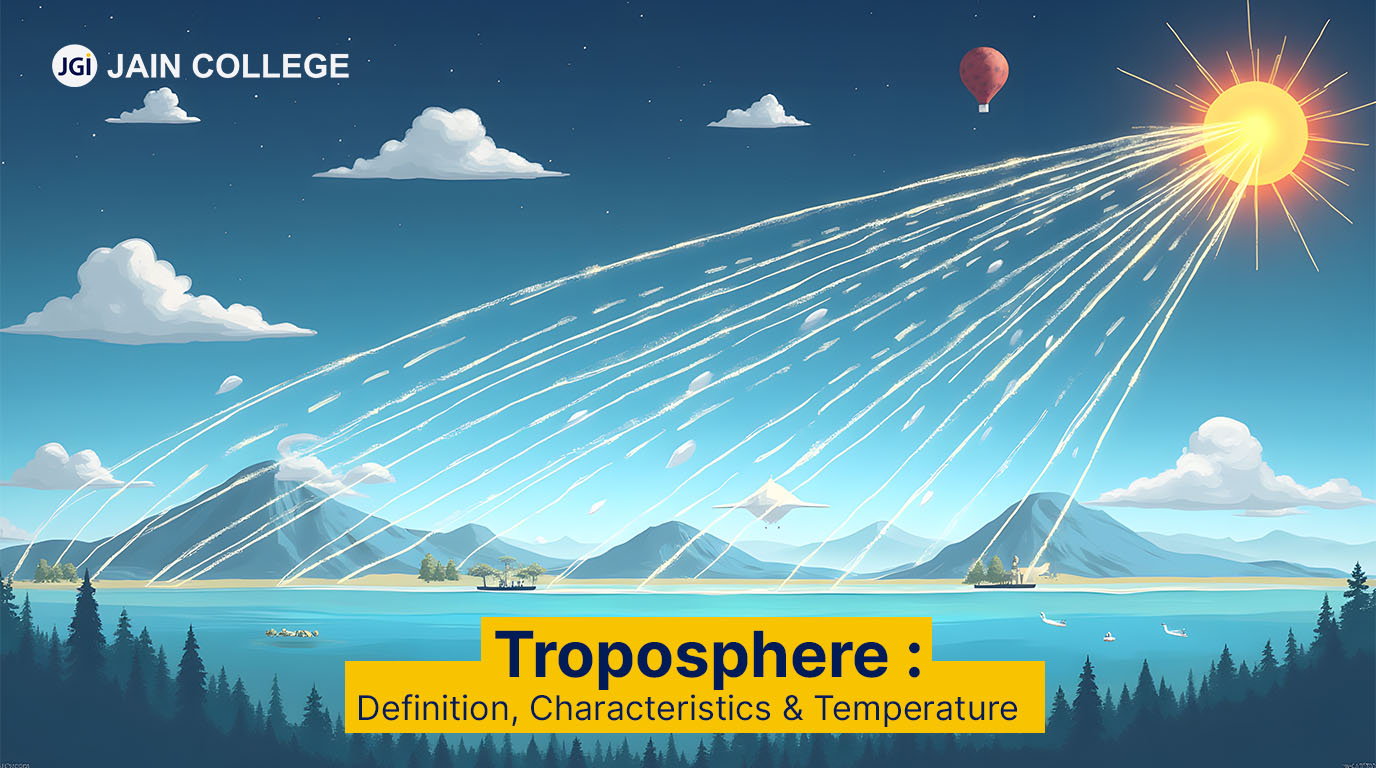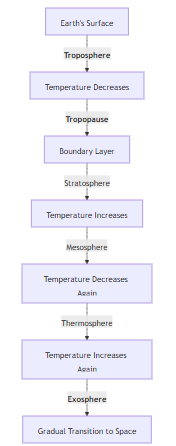
What's REALLY Going On in the Air You Breathe?
Ever wonder what keeps airplanes afloat? Or why is the weather so unpredictable? The answer lies in the troposphere, the atmospheric layer closest to Earth and the one we interact with every single day.
The air we breathe, the weather we experience, and the climate that sustains life all originate in the Troposphere, the lowest layer of Earth's atmosphere. This crucial atmospheric region influences everything from weather patterns to human activities. Understanding its characteristics, structure, and significance helps us appreciate the role it plays in our daily lives and the planet’s overall health.
The troposphere is the lowest and densest layer of Earth's atmosphere, essential for sustaining life. It contains breathable air, primarily composed of 78% nitrogen, 21% oxygen, and trace gases. This layer plays a crucial role in weather patterns, as the Sun heats the Earth's surface, warming the air above it. This process creates convection currents, which drive storms, wind systems, and other atmospheric phenomena. The troposphere extends up to 8–15 km (5–9 miles) and is where almost all weather activity occurs.
The temperature in the troposphere decreases with altitude. On average, it drops by about 6.5°C per kilometer as you move higher. Near the Earth's surface, temperatures are warmest, but at the top of the troposphere (around 8–15 km), they can reach -50°C to -60°C. This temperature drop occurs because the troposphere is heated mainly by the Earth's surface, which absorbs sunlight and radiates heat upward
The Troposphere temperature decreases with height because the Earth's surface absorbs solar radiation, warming the air from below. As warm air rises, it expands due to lower pressure and cools down. This phenomenon follows the average lapse rate of approximately 6.5°C per kilometer (3.6°F per 1,000 feet).
The Tropopause marks the upper limit of the Troposphere and separates it from the Stratosphere. This boundary layer acts as a lid, preventing significant mixing between these two atmospheric layers. The height of the Tropopause varies, reaching around 16-18 kilometers (10-11 miles) at the equator and about 8 kilometers (5 miles) at the poles.
| Layer | Altitude (km) | Temperature Trend | Key Characteristics |
| Troposphere | 0-12 | Decreasing | Weather phenomena, breathable air, densest layer |
| Stratosphere | 12-50 | Increasing | Ozone layer, stable conditions |
| Mesosphere | 50-85 | Decreasing | Coldest layer, burns up meteors |
| Thermosphere | 85-500 | Increasing | Ionosphere, auroras |
| Exosphere | 500-10,000 | Varies | Outermost layer, sparse gases, gradual transition to space, Hubble Space Telescope orbits within the Exosphere |
To visualize Troposphere temperature variations across different atmospheric layers, consider the following mermaid diagram:
%% Temperature trend in atmospheric layers
graph TD;
A[Earth's Surface] -->|**Troposphere**| B[Temperature Decreases]
B -->|**Tropopause**| C[Boundary Layer]
C -->|Stratosphere| D[Temperature Increases]
D -->|Mesosphere| E[Temperature Decreases Again]
E -->|Thermosphere| F[Temperature Increases Again]
F -->|**Exosphere**| G[Gradual Transition to Space]

The Troposphere is the engine of Earth's weather system. Atmospheric circulation within this layer drives the global climate and regional weather patterns.
Scientists continuously study the Troposphere to monitor climate change, air quality, and atmospheric dynamics. Meteorologists rely on Tropospheric data to predict weather patterns, while environmental researchers analyze pollution levels to understand their impact on public health and ecosystems.
The Troposphere is a dynamic and life-sustaining layer of Earth's atmosphere. It regulates climate, drives weather patterns, and supports human life. However, human activities threaten its stability through pollution and greenhouse gas emissions. Understanding the Troposphere’s role is crucial for protecting our environment and ensuring a sustainable future.
The top of the Troposphere is known as the Tropopause.
Troposphere temperature drops because the Earth's surface heats the air from below, and as altitude increases, the air moves away from the heat source.
The Troposphere consists mainly of nitrogen (78%), oxygen (21%), and trace amounts of argon, carbon dioxide, and water vapor.
Its thickness varies with latitude, averaging 12 kilometers (7.5 miles).
No, satellites are placed in the Exosphere, where the air is extremely thin, reducing drag and resistance.
By delving deeper into the composition, dynamics, and significance of the Troposphere, we can better appreciate its role in sustaining life and shaping our planet’s environment.
Stay tuned for more such insightful blogs!

JAIN PU College, a part of the renowned JGI Group, is committed to empowering students with quality education.
Beyond academics, the college ensures its online content reflects the same standard of excellence. Every blog and article is meticulously vetted and proofread by subject matter experts to ensure accuracy, relevance, and clarity. From insightful educational topics to engaging discussions, JAIN PU College's content is crafted to inform, inspire, and add value to its readers, reflecting the institution's commitment to intellectual growth and innovation.
View all Blogs